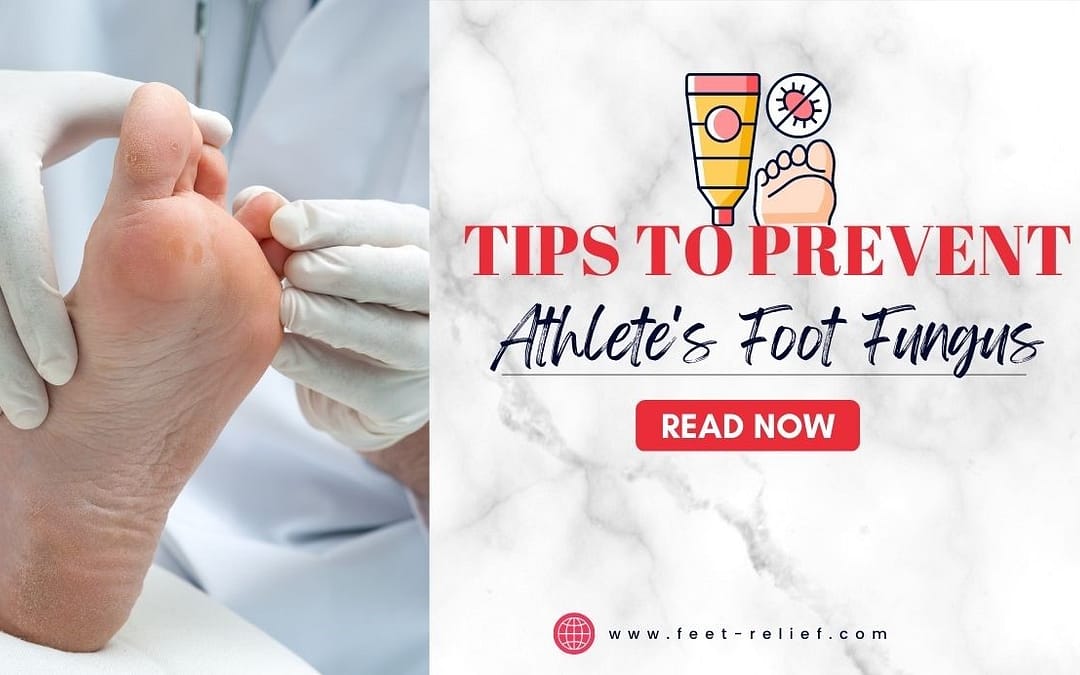Feet-Relief is supported by our audience. When you purchase through one of our links, we may earn a small affiliate commission. As an Amazon Associate I earn from qualifying purchases.Your cost is not affected.
From Shoes to Showers: Top Tips for Preventing Athlete’s Foot
Image Source: FreeImages
Athlete’s foot is a common fungal infection caused by a fungus that thrives in warm, moist environments like shoes and public showers. It can be uncomfortable and unsightly, but it is also preventable. In this article, you will learn about what athlete’s foot is, its causes, symptoms, and prevention tips. Discover how to get rid of athlete’s foot forever and how to keep it from coming back.

What is Athlete’s Foot?
Athlete’s foot is a contagious fungal infection that affects the skin on the feet, causing itching, burning, and stinging sensations. It is caused by a group of fungi called dermatophytes, which thrive in warm, moist environments like public showers and swimming pools. The fungi enter the skin through tiny cracks or cuts and can spread to other areas of the body if left untreated.
Athlete’s Foot Causes & Symptoms
Athlete’s foot is caused by a group of fungi called dermatophytes that thrive in warm, moist environments. The fungi enter the skin through tiny cracks or cuts, usually on the soles of the feet, and can spread to other areas of the body if left untreated. The symptoms of athlete’s foot include itching, burning, and stinging sensations on the affected area, as well as redness, scaling, and cracking of the skin.
How to Deal with Athlete’s Foot
If you suspect that you have athlete’s foot, there are several things you can do to deal with the infection. The first step is to keep your feet clean and dry, especially after sweating or being in a moist environment. You should also wear clean, dry socks and shoes that allow your feet to breathe. Over-the-counter antifungal creams and powders can help to relieve the symptoms of athlete’s foot, but if the infection is severe or doesn’t go away after a few weeks, you should see a doctor.
Related: Causes of Toe Pain and Useful Tips
Athlete’s Foot Prevention Tips
Preventing athlete’s foot is easier than treating it. The following tips can help you keep your feet healthy and free from fungal infections:
- Keep your feet clean and dry, especially after sweating or being in a moist environment.
- Wear clean, dry socks and shoes that allow your feet to breathe.
- Avoid walking barefoot in public showers, swimming pools, and locker rooms.
- Use antifungal powders or sprays on your feet and in your shoes to prevent fungal growth.
- Change your socks and shoes regularly to keep your feet dry and fresh.
How to Get Rid of Athlete’s Foot Forever
If you have athlete’s foot, you may be wondering how to get rid of it forever. The good news is that athlete’s foot is treatable, and with proper care, you can prevent it from coming back. The following tips can help you get rid of athlete’s foot for good:
- Keep your feet clean and dry.
- Use over-the-counter antifungal creams, sprays, or powders to treat the infection.
- Wear clean, dry socks and shoes that allow your feet to breathe.
- Avoid walking barefoot in public showers, swimming pools, and locker rooms.
- Change your socks and shoes regularly.
- If the infection is severe, see a doctor for prescription medication.
Related: How to Cure Athlete’s Foot: Top Tips
Athlete’s Foot and Contagiousness in the Shower
Athlete’s foot is highly contagious and can be easily spread in public showers, swimming pools, and locker rooms. The fungi that cause athlete’s foot thrive in warm, moist environments, making public showers a prime breeding ground for the infection. To prevent the spread of athlete’s foot in the shower, you should wear flip-flops or shower shoes, avoid touching your feet, and dry your feet thoroughly after showering.
How to Remove Athlete’s Foot Fungus from a Bathroom
Athlete’s foot fungus can survive on surfaces like bathroom floors, shower stalls, and towels for up to a month. To remove athlete’s foot fungus from a bathroom, you should clean all surfaces with a bleach solution, wash towels and linens in hot water, and disinfect shoes with antifungal sprays or powders. Regular cleaning and disinfecting can help prevent the spread of athlete’s foot in your home.
Remove Athlete’s Foot Fungus From Bathroom Surfaces (Hunker.com)
Why Athlete’s Foot Keeps Coming Back
Athlete’s foot can be stubborn and may keep coming back if not treated properly. The fungi that cause athlete’s foot can survive on surfaces like shoes and floors for long periods, making reinfection likely. To prevent athlete’s foot from coming back, you should follow the prevention tips listed above, wear clean, dry socks and shoes, and avoid walking barefoot in public showers and pools.
Related: Understanding Common Foot Problems
Athlete’s Foot Home Remedies
There are several home remedies that can help relieve the symptoms of athlete’s foot. These include:
- Soaking your feet in a solution of warm water and Epsom salt.
- Applying tea tree oil or vinegar to the affected area.
- Using baking soda to absorb moisture on the feet.
- Applying aloe vera gel to soothe the skin.
While these remedies can help relieve the symptoms of athlete’s foot, they are not a substitute for medical treatment. If your symptoms persist or worsen, you should see a doctor.
Understanding Athlete’s Foot to Prevent It
Athlete’s foot is a common fungal infection that affects millions of people each year. Fortunately, it is also preventable and treatable. Following the prevention tips in this article, you can keep your feet healthy and free from fungal infections. If you do get athlete’s foot, don’t worry – with proper care and treatment, you can get rid of it for good.
Amazon and the Amazon logo are trademarks of Amazon.com, Inc, or its affiliates.



